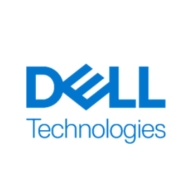

NetApp Cloud Volumes ONTAP and Dell CloudBoost compete in data management and cloud storage solutions. NetApp holds an advantage in pricing and customer support, while Dell CloudBoost shines with advanced features justifying its cost.
Features: NetApp Cloud Volumes ONTAP offers robust data management capabilities, seamless integration with public clouds, and effective storage optimization. Dell CloudBoost excels in comprehensive data backup, archival features, and data security across multi-cloud settings.
Ease of Deployment and Customer Service: NetApp Cloud Volumes ONTAP boasts straightforward deployment and extensive customer support, facilitating smooth cloud transitions. Dell CloudBoost presents more complex deployment but compensates with proactive customer service for guided setup.
Pricing and ROI: NetApp Cloud Volumes ONTAP features competitive pricing and moderate setup costs, ensuring favorable ROI through cost-effective management. Dell CloudBoost, with higher costs, delivers substantial ROI due to superior management capabilities and security benefits.
| Product | Market Share (%) |
|---|---|
| NetApp Cloud Volumes ONTAP | 0.7% |
| Dell CloudBoost | 0.2% |
| Other | 99.1% |

| Company Size | Count |
|---|---|
| Small Business | 7 |
| Midsize Enterprise | 11 |
| Large Enterprise | 53 |
With Dell CloudBoost, products of Dell Data Protection Suite, Including Dell NetWorker, Dell Avamar and Dell PowerProtect Data Manager, are optimized for enterprise applications running in public cloud environments. CloudBoost is available with Data Protection Suite.
NetApp Cloud Volumes ONTAP is an efficient storage management solution for managing and storing data in the cloud. It offers seamless integration with cloud providers, advanced data replication capabilities, and high data protection. With reliable performance, it is ideal for industries like healthcare and finance.
We monitor all Cloud Backup reviews to prevent fraudulent reviews and keep review quality high. We do not post reviews by company employees or direct competitors. We validate each review for authenticity via cross-reference with LinkedIn, and personal follow-up with the reviewer when necessary.